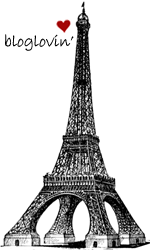¡¡Buenos y fríos días!! Empezamos de nuevo la semana y para iniciarla con buen pie ¡¡qué mejor manera que con vuestra lectura al post de hoy!! El de hoy es un post muy visual, dado que trataremos sobre fotografía, centrándonos en aquella que se realizaba en los años 20, en blanco y negro, para la revista Vogue. ¡Así es! Aquella donde se representaba a mujeres de tez, suponemos, pálida, con labios pintados con carmín, vistiendo sofisticados sombreros, en poses elegantes. ¡Exacto! Mujeres que bien parecen representar a aquellas que aparecían en la novela de F. Scott Fitzgerald en El Gran Gatsby o la mujer con sombrero negro pintada en 1908 por Van Dongen.
Good and cold day! We start the week again and what better way than to read our post!The today post is a very visual, as we will discuss about photography, focusing on one that was made in the 20s, black and white, for Vogue. That's right! That where women represented complexion, we assume, that pale, lips, we believe, wearing hats in graceful poses. Exactly! Women that they seem to represent those that appeared on the novel The Great Gatsby by F. Scott Fitzgerald or woman with black hat painted in 1908 by Van Dongen.
Vogue magazine has been one of the oldest and most international recognition, where the greatest painters and photographers of the XX and XXI have worked. Founded in 1892 by Arthur Baldwin Turner, a member of NY high society, sold the magazine in 1909 to Conde Nast, with who the magazine acquired all the reputation and glory, as today. Vogue is synonymous of glamour and elegance, which quickly spell high-powered NY woman of the turn of the century.
Entre sus páginas se podían leer críticas a obras de teatro, a libros, música, estilo de vida. En 1913, Vogue propone un nuevo concepto de fotografía de moda, retratos firmados por el Barón de Meyers, naciendo así las producciones de moda, a lo que el público reaccionó de manera entusiasta.
Among its pages you could read criticism plays, to books, music and lifestyle. In 1913, Vogue proposes a new concept of fashion photography, portraits signed by Baron Meyers, giving birth to the fashion productions, to which the audience responded enthusiastically.
Las portadas tienen el objetivo de vender la revista al lector, como si fuera fuera un cartel instalado en una tienda para atraer la atención del consumidor. Con el crecimiento de la industria, las portadas se transforman en una importante herramienta de marketing. En este contexto, debemos de considerar la repercusión que supondría la primera portada con una fotografía a color, realizada por Edward Steichen, donde se representaba a una mujer en traje de baño alzando una pelota. A partir de este momento, la fotografía en Vogue comenzó a ganar espacio, en detrimento de las ilustraciones. A partir de ahora, Vogue se convertiría en la revista de moda, por excelencia.
The covers are intended to sell the magazine to the reader, as if it were a sign installed at a shop to attract consumer attention. With the growth of the industry, the covers become an important marketing tool. In this context, we must consider the impact that would be the first cover with a color photograph by Edward Steichen, where he represented a woman in a bathing suit holding up a ball. From this moment, the photograph in Vogue began to gain ground at the expense of the illustrations. From now, Vogue became the fashion magazine par excellence.
¿Os ha gustado el post de hoy? ¿y la selección de fotografías?¿conocíais los nombres de estos fotógrafos?
Would you have liked the post today? What picture selection? Knew each of these photographers names?


Would you have liked the post today? What picture selection? Knew each of these photographers names?


¡¡Disfrutad de la semana!!
Esperamos vuestros comentarios aquí abajo, en FACEBOOK y TWITTER
Enjoy the week!
Your comments below, on FACEBOOK and TWITTER
Enjoy the week!
Your comments below, on FACEBOOK and TWITTER




















.jpg)


Me ha encantado el post de hoy. Las fotografías son preciosas, la moda de esa época es inigualable
ReplyDelete